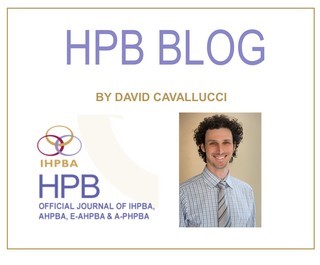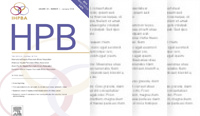International Hepato-Pancreato-Biliary Association
HPB Blog - June 2019

It was fantastic to catch up with so many colleagues at this past months Royal Australasian College of Surgeons Meeting in Bangkok and International Laparoscopic Liver Surgery (ILLS) meeting in Tokyo. There were a great number of presentations on technical advancements in our field and an ongoing focus on the basic sciences that will lead to better outcomes for our patients.
This month’s edition of HPB is all "H" and "P" and full of quality research in oncology and major resectional surgery. A reminder to all our excellent (and future!) contributors that we would love to see more work answering important questions within all the benign work that makes up HPB practice internationally.
Starting with the pancreas, in Loveday et al the Toronto group present the results of a systematic, neo-adjuvant approach to pancreatic ductal adenocarcinoma in patients with proven or suspected arterial involvement. The drop out rate was high as you would expect in this group of patients with advanced disease (46/89 explored, 31 resected), but the perioperative results were excellent. Unfortunately, near universal disease recurrence confirms that whilst this complex surgery can be performed safely, effective systemic therapies are critical for our patients.
Addeo et al's retrospective look at PNETs confirms that macrovascular invasion is more common in larger (>4cm), Grade 2+ lesions and these patients have more difficult operations with worse long term outcomes.
2 papers from the Pittsburgh group (along with others) look at robotic pancreatic resection. Jung et al demonstrate that video review of pancreaticoduodenectomy was unable to predict negative vein margins with adequate sensitivity, suggesting that intra-operative assessment alone may be insufficient to allow decisions regarding vein resection. Varley et al identified "average psoas density" as a useful radiological marker of frailty and found that high risk patients may do better on some parameters with robotic/MIS compared with open resection.
Dhar et al looked at perioperative blood transfusions following hepatic lobectomy in the USA. Around one-fifth of patients required a transfusion with a third of those requiring a large transfusion (>5 units). Those patients needing large transfusions tended to be more comorbid and have much poorer outcomes than the cohort. Following that theme, Baker et al report on outcomes following pre-operative phlebotomy and subsequent autotransfusion as a technique for reducing blood loss and allogenic transfusion rates in major hepatectomy. This is an interesting technique that looks deserving of more research in light of the findings of Dhar.
3 papers look at survival in HCC. Goldaracena et al present a prognostic score that may help to choose patients with HCC recurrence after LT that benefit from aggressive/curative intent therapy. Lim et al show that a positive FDG PET scan prior to resection for HCC can predict vascular invasion and poor outcome, but it remains difficult to know whether screening with FDG PET will help this patient population where less then 40% have positive PET scans. Finally, Zhu and colleagues analyse a large group of patients with ruptured HCC confirming that overall survival is worse, even for the group that make it to hepatectomy.
That's only a taste of the excellent research in this month’s HPB journal!
Corporate Partners
If you are interested in becoming a Corporate Partner of the IHBPA please contact industry@ihpba.org
Find out more


